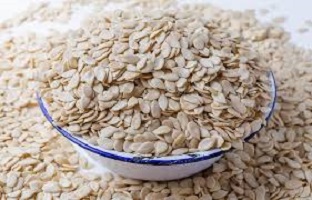What is Egusi? Unraveling the Secrets behind Nigerian Delicacy
What is Egusi? Unraveling the Secrets Behind Nigerian Delicacy
Egusi refers to the protein-rich seeds obtained from certain species of melon, squash, and gourds.
When dried and ground, these seeds become a key ingredient in many West African dishes, particularly in soups and stews.

In Nigeria, egusi soup is a staple meal, often served with swallows like pounded yam, eba, fufu, and semovita.
The seeds’ high protein and fat content make them a nutritious addition to various dishes, providing essential nutrients while enhancing flavors.
Understanding Egusi Seeds: A Nutritious West African Staple
Egusi seeds are nutrient-dense, oil-rich seeds derived from small, hard-shelled green melons adorned with cream-colored streaks or spots, giving them a resemblance to watermelons.
Scientifically known as Cucumeropsis mannii, these seeds belong to the Cucurbitaceae family, which includes gourds, melons, and squashes.
Sometimes referred to as white-seed melon, egusi is also occasionally mislabeled as bitter melon—though it is distinct from the bitter melon commonly used in Asian cuisine.
This name stems from the white flesh of the melon, which can have a mildly bitter taste.
Processing Egusi: From Seed to Soup
After harvesting, egusi seeds are extracted from the melon’s flesh and left to sun-dry until their shells turn a mustard-yellow shade.
They can be stored whole, deshelled, or ground into a fine powder, depending on their intended use.
Traditionally, deshelling is done by hand—a time-consuming but highly valued method.
The seeds are then used in various ways, from thickening soups and stews to making nut butter, flour, or even being pressed for cooking oil.
In some Nigerian communities, egusi is also used to prepare Mgbam, a protein-rich food made by blending ground egusi with usu, a mushroom tuber similar to truffles.
Processing Egusi Seeds
Once harvested, the seeds are meticulously extracted from the melon’s pulp and left to sun-dry until their outer shells take on a deep mustard-yellow hue.
At this stage, they can be stored in their natural form, deshelled—either by hand (a highly prized and labor-intensive method) or mechanically—or ground into coarse flour for culinary applications.
Versatile Culinary Uses
Egusi seeds serve a wide array of culinary purposes, making them a staple in West African kitchens. They can be:
- Toasted and eaten as a crunchy snack
- Ground and pressed to extract cooking oil
- Blended into nut butter
- Milled into flour for baking or thickening soups and stews
- Used creatively, such as in pesto or other condiments
A unique traditional delicacy from eastern Nigeria, Mgbam, is made by combining finely ground egusi seeds with usu—a type of mushroom tuber similar to a truffle but without the intense aroma.
This combination creates a protein-rich, textured food that is both delicious and nourishing.
Egusi’s rich, nutty flavor and high oil content make it an indispensable ingredient in many West African dishes, particularly soups and stews, where it serves as both a thickener and a source of healthy fats and protein.
Whether used whole, ground, or pressed into oil, egusi continues to be a treasured ingredient in African cuisine.
The Cultural Significance of Egusi
Egusi is more than just a food ingredient—it is an essential part of West African culture.
In Nigerian households, it is a dish often prepared for special occasions, family gatherings, and celebrations.
The process of making egusi soup, from grinding the seeds to simmering the broth, is deeply rooted in tradition.
The dish represents warmth, hospitality, and the communal spirit of African cuisine. Whether eaten with pounded yam, fufu, or rice, egusi soup remains a beloved comfort food across generations.
In Summary
The seed continues to be a symbol of nourishment and cultural heritage, proving that its role in West African cuisine is as essential as ever.


